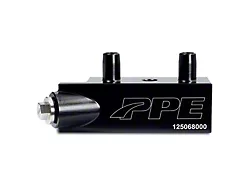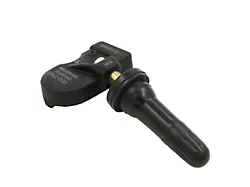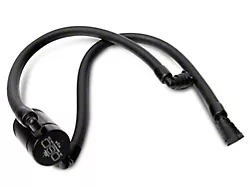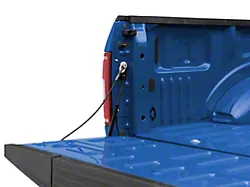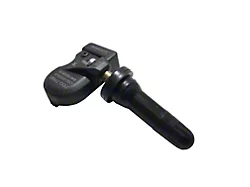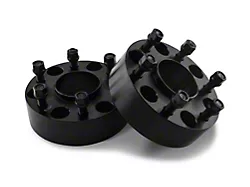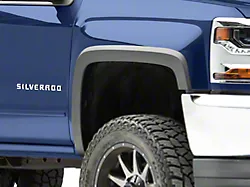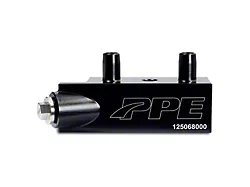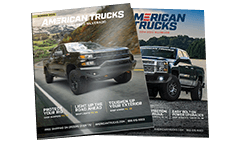
How to Install ReadyLIFT 2.25 in. Billet Aluminum Leveling Kit - Black on your Silverado
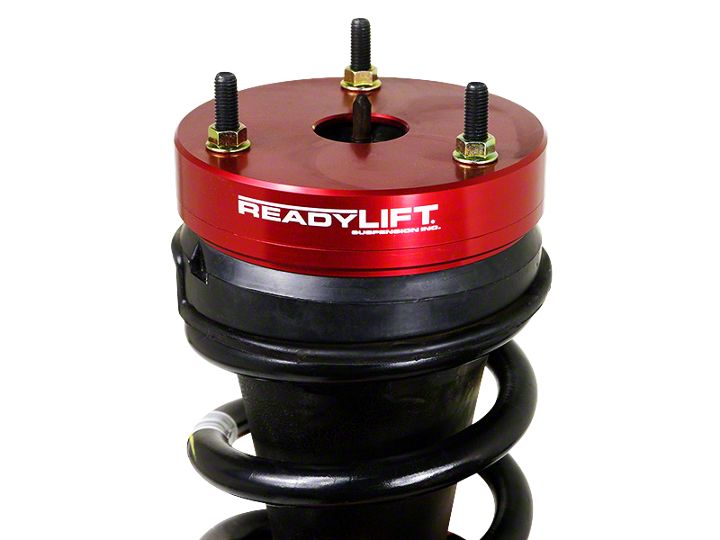
Shop Parts in this Guide
Raise and support vehicle by frame
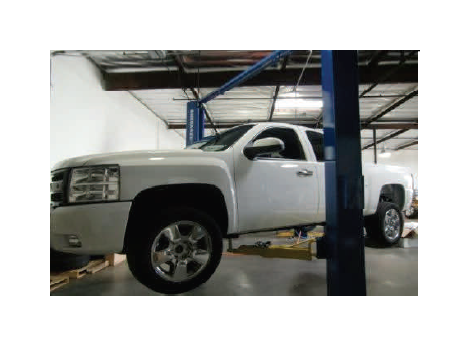
Remove front wheels/tires
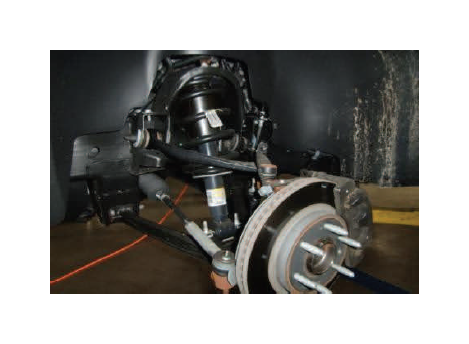
Disconnect sway bar end links

Disconnect ABS/brake line bracket on upper control arm
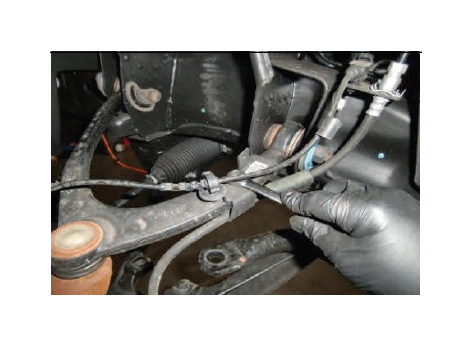
Disconnect ABS bracket on spindle
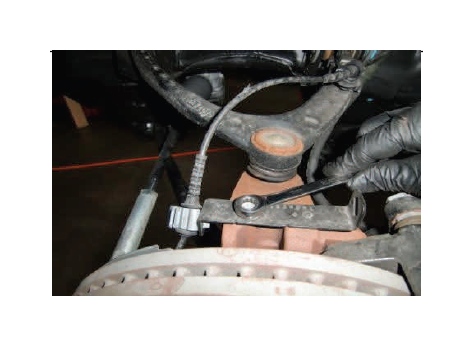
Loosen upper ball joint nut

Leave nut attached as shown
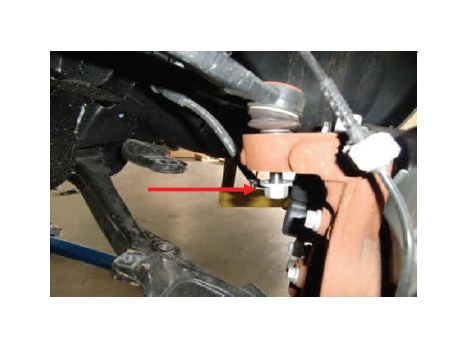
Strike spindle with hammer to loosen ball joint
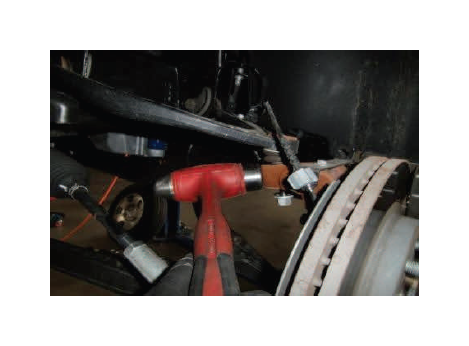
Support suspension with jack

Now remove nut from ball joint
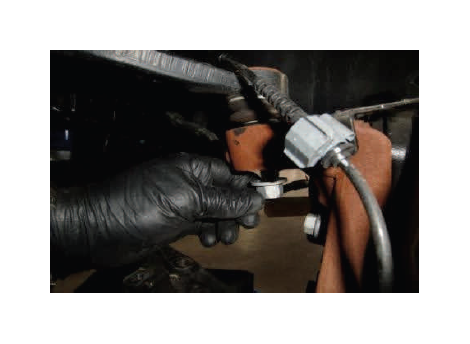
Remove lower strut mounting bolts
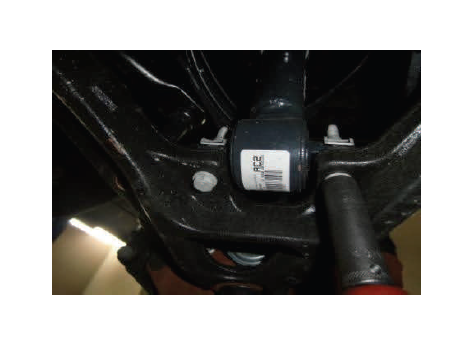
Unclip upper strut ABS clips on mounting nuts
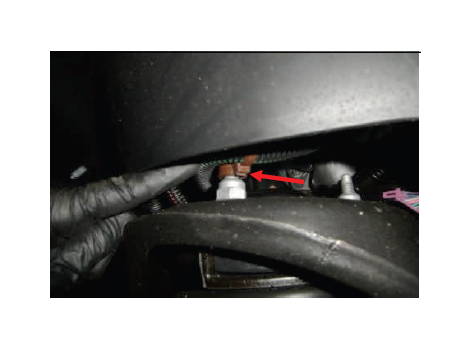
Remove upper strut mounting nuts
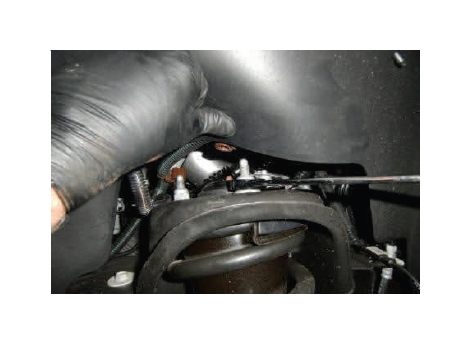
Lower suspension and remove strut assembly from vehicle
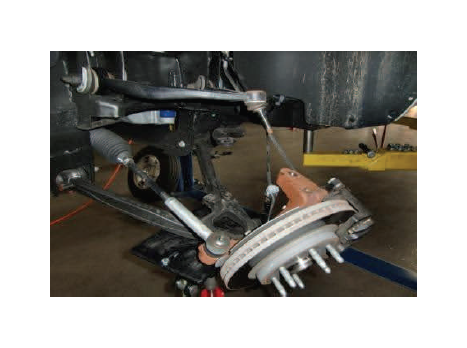
Place strut in vise or spring proper compressor
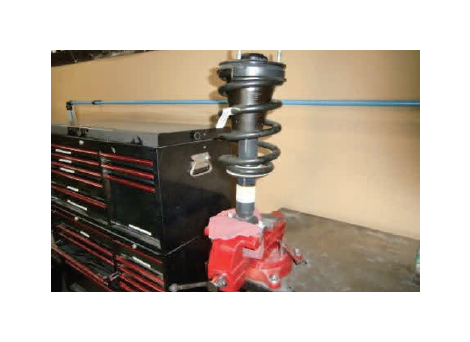
Use spring compressor to relieve tension for disassembly
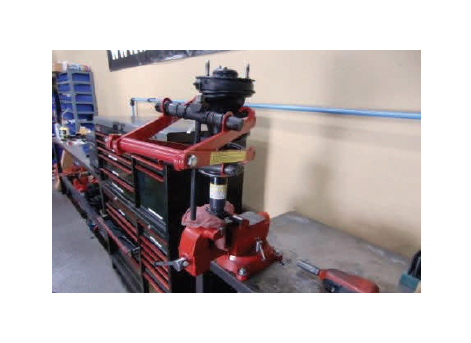
Use caution, spring is under severe tension
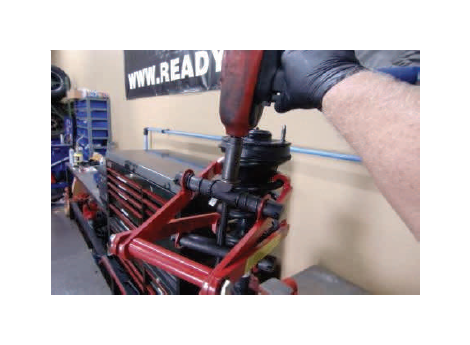
Adequate compression achieved when you see gap here

Remove top retaining nut
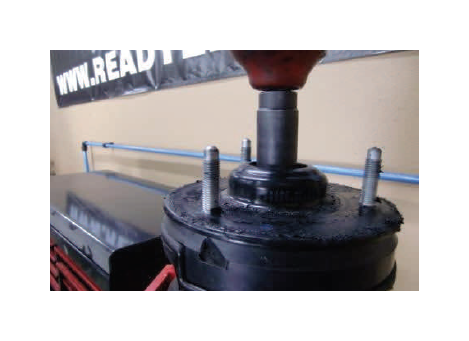
Remove upper retaining plate only
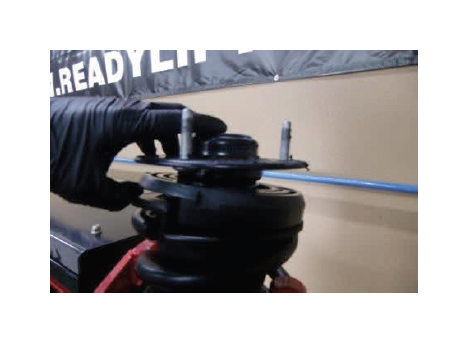
Remove foam bump stop
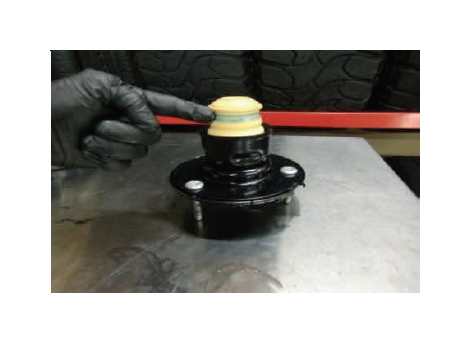
Remove press-in studs
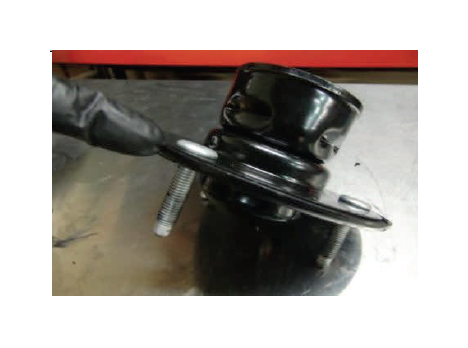
Separate two halves of mounting plate
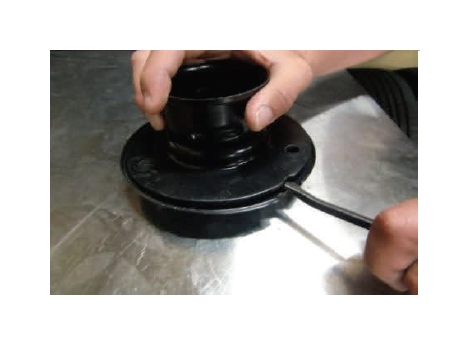
Remove inner rubber bushing
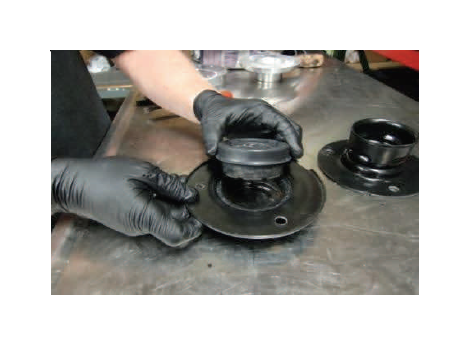
Shown: T6-3085 kit unassembled

Place OE strut bushing between two halves
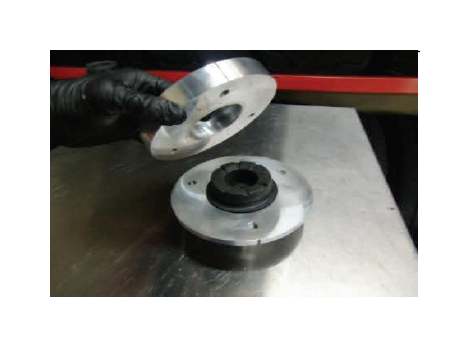
Install mounting studs into countersink holes and tighten
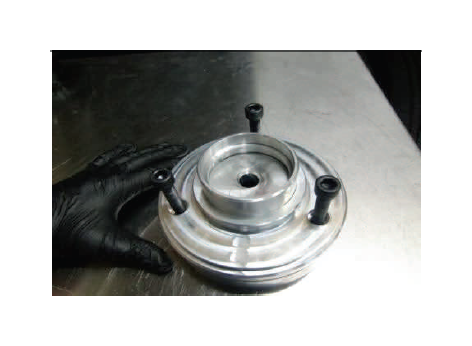
Shown: T6-3085 properly assembled
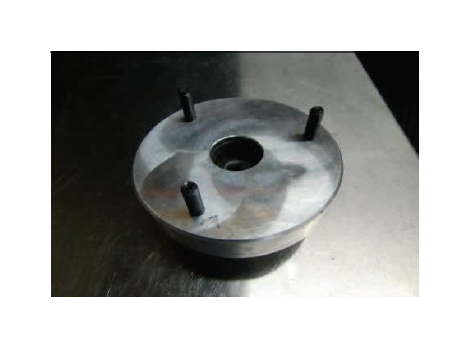
Install tight fitting OE bump stop into T6-3085
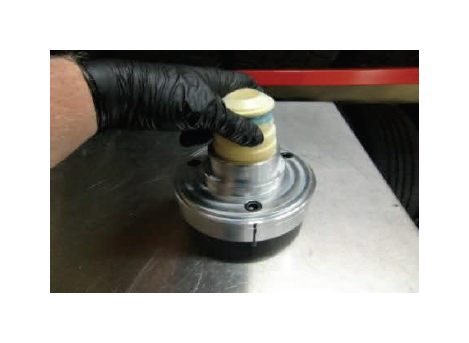
Note; Indexing mark and reposition onto strut assembly

Use OE nut and tighten down to factory spec
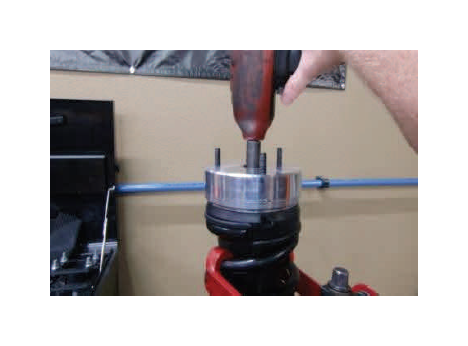
Install strut assembly w/ new nuts on top, OE in lower
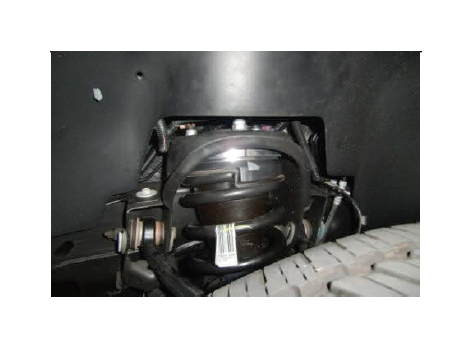
Raise suspension to reconnect ball joint to spindle
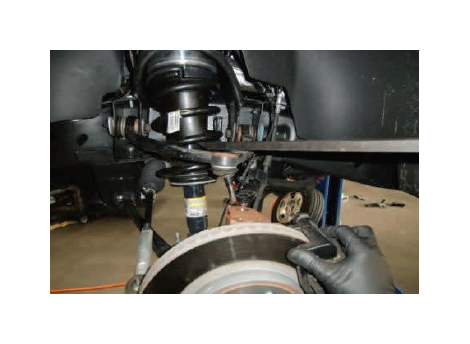
Use a pry bar to depress ball joint into spindle, attach nut
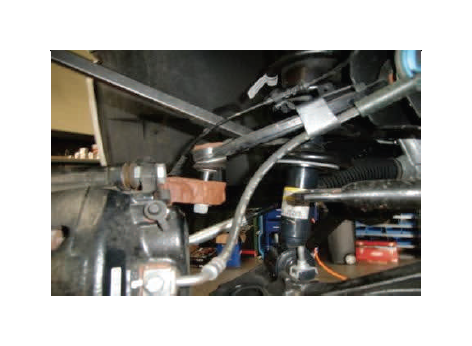
Tighten to spec, use allen wrench to hold ball joint stem
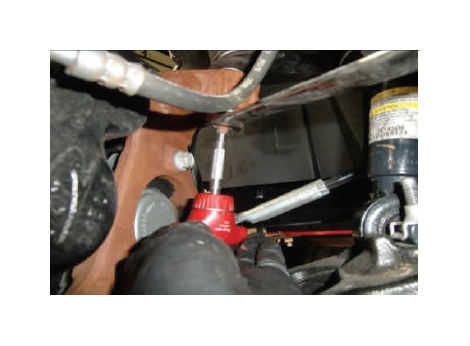
Reconnect sway bar end link and ABS/brake brackets
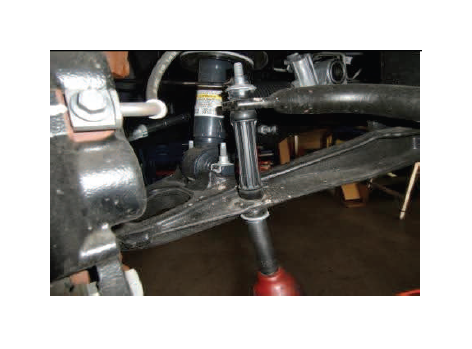
Final Checks & Adjustments
Post Installation Warnings: Once the vehicle is lowered to the ground, check all parts which have rubber or urethane components to insure proper torque. Torque wheels to factory specs. Move vehicle backwards and forwards a short distance to allow suspension components to adjust. Turn the front wheels completely left then right and verify adequate tire, wheel, brake line, and ABS wire clearance. Test and inspect steering, brake and suspension components for tightness and proper operation. Inspect brakes hoses and ABS lines for adequate slack at full extension. Failure to perform the post inspection checks may result in vehicle component damage and/or personal injury or death to driver and/or passengers. Test drive vehicle and re-check the torque of all fasteners and re-torque wheels on vehicle. Readjust headlamps.
Vehicle Handling Warning: Vehicles with larger tires and wheels will handle differently than stock vehicles. Take time to familiarize yourself with the handling of your vehicle.
Wheel Alignment/Headlamp Adjustment:
It is necessary to have a proper and professional wheel alignment performed by a certified alignment technician. Align the vehicle to factory specifications. It is recommended that your vehicle alignment be checked after any off-road driving. In addition to your vehicle alignment, for your safety and others, it is necessary to check and adjust your vehicle headlamps for proper aim and alignment
Vehicle Re-Torque and Safety Inspection:
Upon completion of all services and adjustments performed on your vehicle, and within 50 miles of driving, check to ensure all fasteners and hardware are properly torqued to specification as noted in the vehicles factory service manual or the torque chart included.
